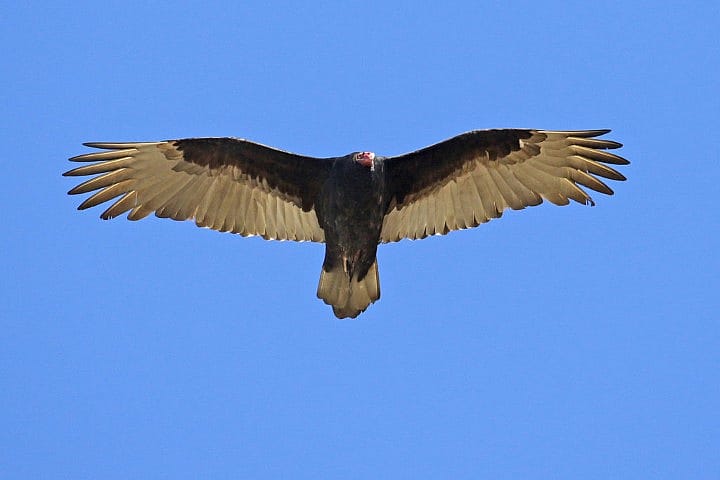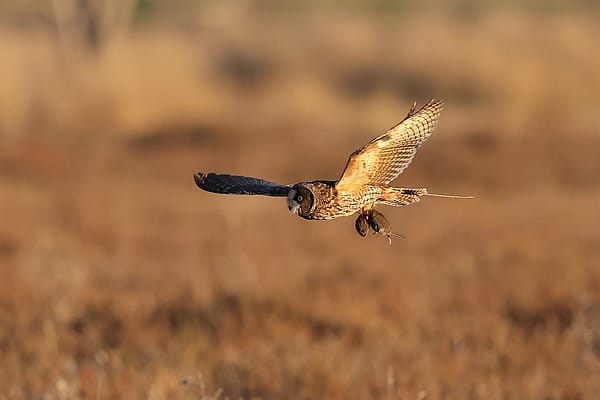
Raptor Silhouettes!
Hey everyone, it’s Katie again! I really hope you liked all of the owl blogs! Next, we’re going to talk about raptor silhouettes, and how they can help you figure out what kind of bird you are looking at, what kind of hunting styles they may have, and more!
As we all know, across the 11,000+ species of birds, there are so many different wing shapes. Wing shapes can determine the lifestyle of a bird (penguins are definitely not able to fly with their wings, but use them in a different way)

and also what kind of food you can go after (it is hard to catch fast flying prey if your wings are small and stubby like a kiwi)

The same applies to raptors; even among raptors there’s lots of variation in wing size proportion and shape to help with the different lifestyles. You can often make a pretty good guess at what kind of food and hunting method they use based on those characteristics. The basic groups that we classify raptors into according to shape are: Buteo, Accipiter, Falcon, Owl, and Vulture. Let’s look a bit closer at these distinctions!
Buteo typically refers to the group of medium to large sized hawks, and they are distinguished by large, broad, rounded wings with long broadly fanned tails. These are the soaring hawks, which can spend hours at a time riding air currents and conserving lots of energy; the large surface area of the wings and tail are perfect for catching those rising currents of warm air, but not the best for maneuverability. Red-Tailed Hawks, Ferruginous Hawks, Rough-Legged Hawks, and Swainson’s Hawks are common examples. Eagles also qualify for this group because of their

wing shape! Many, though not all buteos, are searching for mammals to hunt, and while they can dive, they are not typically renowned for their speed. They usually either perch on power poles or soar high until they spot their prey, glide down and try to stay out of sight, and then catch their prey unawares on the ground. You don’t really want a ton of speed here, because colliding with the ground at high speeds would not turn out well!

Accipiter is another fun word, and it is referring another to a group of hawks, but these hawks are found in forests, and are masters of agility. With trees and bushes all around, large wings would get in the way and make it difficult to catch your food. Luckily, accipiters have short rounded wings with long slimmer tails. Many accipiters are hunting and chasing songbirds, which are very good at flying fast and ducking and dodging through branches. The shorter wings make it easier to tuck in and avoid hitting branches, and the roundness still gives them lots of power on the down stroke. Similarly, the long narrower tail has a few specific functions: it acts like a rudder and steers the bird in and around most obstacles, but can also be fanned out to act like a third wing. Examples of accipiters include Cooper’s Hawks, Sharp-Shinned Hawks, and Goshawks.
Check out this incredible video of how a Goshawk flies: https://www.youtube.com/watch?v=2CFckjfP-1E In this video, you can see a trained Goshawk flying through tunnels and small spaces, along with short clips of a Goshawk flying through trees and underbrush!

Falcons are very well known to be masters of speed – one of the fastest animals in the world is the Peregrine Falcon, reaching speeds of over 240 miles per hour in a dive. These raptors have long and tapered wings, with long tails and aerodynamic bodies, all of

which contribute to their speed. Many falcon species, like the accipiters, hunt birds, but their methods are different. Most falcon species prefer open country where they can spot their prey from afar and sneak up on it quickly. Using their speed, they start high above their prey, stoop down at it, and punch it in the head or body as they fly by, knocking it clean out of the sky. Though narrowed, falcon wings are very powerful, attached to strong muscles and lined with stiff strong feathers that can produce lots of force when required. Some examples of this group include the Peregrine Falcon, the Gyrfalcon, and the American Kestrel. The American Kestrel is a kind of strange falcon, as they mostly eat mice, but they can still be speedy avoiding large predatory birds.

Owls, as we have already discussed, are in a special group all their own. If you remember from the last blog post, owls are extremely quiet flyers mainly because of soft feathers, but another contributing factor is the shape of the wings and the way they fly. Owls have typically huge wings for their body size, the wings are big and broad to catch a lot of air sort of like the buteos, and they do a lot of gliding and soft slow flapping to avoid the noise and turbulence that buteos and the other raptors make. Watch this amazing video comparing the flight sounds of a Barn Owl, a Pigeon, and a Peregrine Falcon: https://www.youtube.com/watch?v=d_FEaFgJyfA . In this group are of course the Great Horned Owl, the Short-Eared Owl, the Barn Owl, and most of the other owls as well.

Finally, the Vultures: most people here in the states recognize the Turkey Vultures because of their distinctive shape and flight pattern. They are similar to the buteos in that their wings are large and broad and meant for soaring, but the major difference is that the wings are longer for their body size, their primary feathers create very pronounced slots at the ends of the wings, and they have a very low wing load. Wing load means that the vultures have a low weight compared to their large wing area; on average, Turkey Vultures have a 5-6 foot wingspan, but only weigh around 4 pounds. These things make them even better at soaring than some of the buteos! With these factors, Turkey Vultures can get up into the air and ride those warm air currents called thermals for hours at a time with very minimal flapping (sometimes up to 6 hours without flapping)! The slots at the end of the wings are very helpful in reducing drag and also allowing the bird to control its flight with a simple adjustment of a wingtip.
Now that you have read through this short and hopefully helpful guide, next time you go outside, see if you can identify some of the birds flying high in the sky! See you next week!
Written By
Melissa Hill
While earning her Bachelor's Degree in Wildlife Management at the University of Wyoming, Melissa began volunteering at Laramie Raptor Refuge and was instantly hooked on birds of prey. Since those early days, she has worked with nearly 70 different raptors at four different raptor education groups in three states. She is a former member of the Education Committee for the International Association of Avian Trainers and Educators (IAATE) and a National Association for Interpretation's Certified Interpretive Guide. When she's not "playing with the birds" she enjoys spending time quilting, crocheting, and exploring the Greater Yellowstone Ecosystem with her non-bird family.












